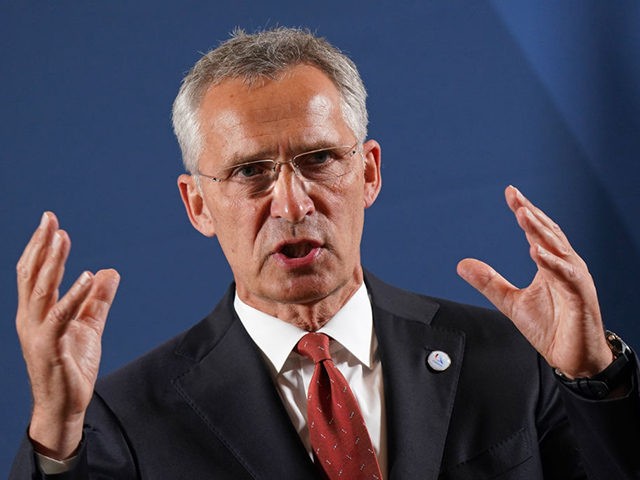NATO Secretary-General Jens Stoltenberg responded on Tuesday to reports of a U.S. troop drawdown in Afghanistan by resolving to continue the NATO mission into its third decade.
“The price for leaving too soon, or in an uncoordinated way, could be very high,” he warned.
NATO took a leadership role in the United Nations-mandated international security force in Afghanistan in August 2003. At its peak, the force included over 130,000 troops from 50 nations, including NATO and its partner countries.
In 2015, NATO’s mission in Afghanistan transitioned into a “Resolute Support Mission” with about 12,000 troops, dedicated to training and supporting the Afghan military, which had supposedly become capable of protecting the internationally-recognized Afghan government on its own, with a little help from American and European forces.
Stoltenberg said on Tuesday that NATO would continue its mission in Afghanistan for the foreseeable future, including a commitment to fund Afghan security forces through at least 2024.
“We now have under 12,000 NATO troops in Afghanistan, and more than half of these are non-U.S. forces,” he said.
“We went into Afghanistan together. And when the time is right, we should leave together in a coordinated and orderly way. I count on all NATO allies to live up to this commitment, for our own security,” he declared, without giving any indication of when that might happen, or if it might happen before the 20th anniversary of NATO’s mission to defend the Afghan government against the Taliban and other extremists.
“Afghanistan risks becoming once again a platform for international terrorists to plan and organize attacks on our homelands. And ISIS could rebuild in Afghanistan the terror caliphate it lost in Syria and Iraq,” Stoltenberg argued.
Stoltenberg’s comments came after the Pentagon announced U.S. troop levels in Afghanistan will be reduced from 4,500 to 2,500 by the middle of January — a significant drawdown, but not the full withdrawal earlier proposed by President Donald Trump. U.S. deployments to Iraq will also be reduced to 2,500 from their current level of about 3,000.
Acting Secretary of Defense Christopher Miller, who was appointed by Trump on November 9 to replace Mark Esper, said the president made his decision about Afghanistan troop levels after “continuous engagement with his national security cabinet over the past several months, including ongoing discussions with me and my colleagues across the United States government.”
“I have also spoken with our military commanders and we all will execute this repositioning in a way that protects our fighting men and women, our partners in the intelligence community and diplomatic corps, and our superb allies that are critical to rebuilding Afghan and Iraqi security capabilities and civil society for a lasting peace in troubled lands,” Miller added.
In his first message to American military forces over the weekend, Miller said it was “time to come home” from Afghanistan.
“Indeed, this fight has been long, our sacrifices have been enormous, and many are weary of war — I’m one of them — but this is the critical phase in which we transition our efforts from a leadership to supporting role,” Miller said.
“We are not a people of perpetual war — it is the antithesis of everything for which we stand for which our ancestors fought. All wars must end,” he declared.
White House National Security Adviser Robert O’Brien said on Tuesday that President Donald Trump hopes American troops will “come home safely and in their entirety” by May of next year.
The Washington Post interpreted Stoltenberg’s comments on Afghanistan as a “rare rebuke of Trump” and the “sharpest tone Stoltenberg has taken” toward the president.
The Post implied this is because Stoltenberg was terrified of antagonizing Trump, who might withdraw U.S. support for NATO projects in Afghanistan and elsewhere, or even withdraw from the organization entirely if severely displeased. With former Vice President Joe Biden the presumptive winner of the 2020 election, Stoltenberg and other top NATO officials are purportedly overcoming their reluctance to criticize Trump, although they allegedly remain apprehensive of what he might do before leaving office in January.
There are plenty of American officials who agree with Stoltenberg, including Republicans as prominent as Senate Majority Leader Mitch McConnell (R-KY), who said a “precipitous drawdown in either Afghanistan or Iraq would be a mistake.”
McConnell said pulling out of Afghanistan could be “even worse than President Obama’s withdrawal from Iraq back in 2011,” and perhaps even a debacle on par with “the humiliating American departure from Saigon in 1975.”
Trump’s supporters find it absurd to talk about a “precipitous drawdown” from an operation that has been in progress for twenty years, with no end in sight. The assertion by the U.N. and NATO in 2014 that the Afghan government had become capable of standing on its own two feet has not come to fruition. The interventionist consensus now holds that Trump would be throwing Kabul to the Taliban wolves — and maybe ISIS and al-Qaeda to boot — if American forces withdraw.
There is no talk of defeating the Taliban or driving out the international terrorist organizations, so the implication is that American troops would have to remain in Afghanistan forever to keep those malevolent forces in check. The Taliban presently controls about two-thirds of Afghanistan. No one who thinks continued deployment is necessary to keep them from seizing the remaining third seems to have a plan for pushing them back or weakening them enough to make that slow and graceful proposal possible in 2023, to use the NATO timeline referenced by Stoltenberg.
The widely-expressed fear is that Afghanistan will once again become a “safe haven” for terrorists, just as the Taliban assisted al-Qaeda before 9/11, without a garrison of U.S. and NATO troops. Yet no concrete plans exist for ensuring Afghanistan would not still be at equal risk of becoming a terrorist safe haven five or ten years from now.

COMMENTS
Please let us know if you're having issues with commenting.